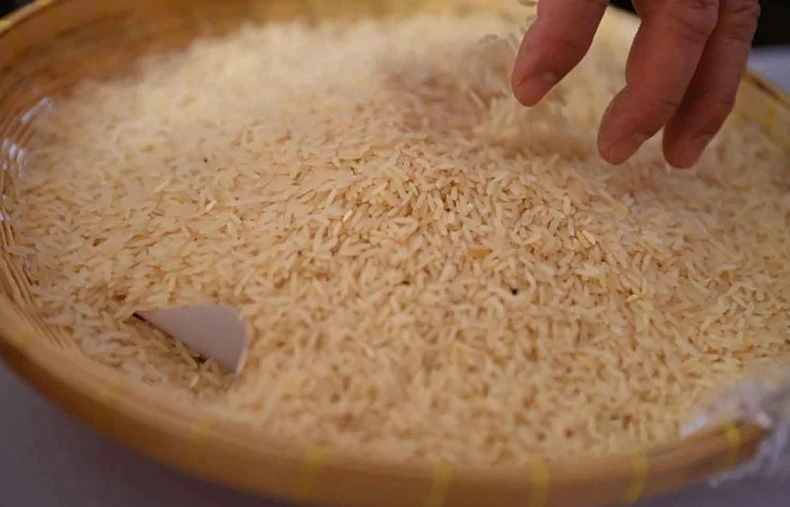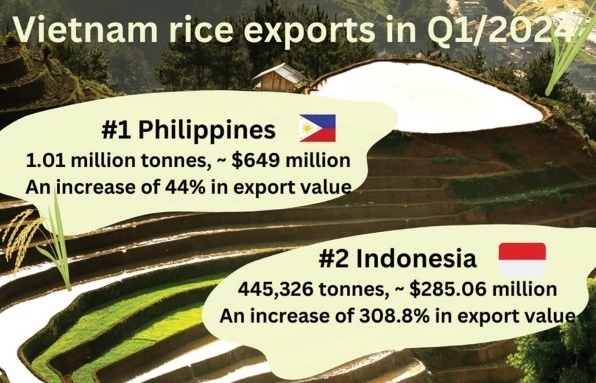Appetite for rice brand development
 The current state investment in paddy rice development is still modest. How should big paddy rice model fields take shape then?
The current state investment in paddy rice development is still modest. How should big paddy rice model fields take shape then?
State investment into developing agricultural sciences including irrigation work, seafood, paddy rice and others is around VND600 billion ($28.6 million) per year, a low level compared to other countries since a paddy rice research institute in the Philippines gets a state injection of $80 million or a paddy rice programme in China enjoys $55 million investment per year.
In fact, state investment into agriculture represents 10 per cent of budget capital from just 4 per cent previously, with 8 per cent channeled into irrigation works. Hence, sourcing investment from the business community for model fields is crucial.
However, only several enterprises have got involved in creating model fields in a complete process. Some enterprises just took part in certain stages of the process. Some Mekong Delta provinces like An Giang and Dong Thap have effectively handled the task with more than one million hectares each crop reason.
Developing large-scale paddy rice model fields is a proper step towards promoting Vietnam’s rice image on the global stage.
What must we do first regarding Vietnam’s rice brand promotion in your view?
We must pay due heed to post-harvest technology which is the most important link in maintaining high and stable rice quality.
To secure steady exports, we must succeed in creating prestige and building a trademark for Vietnamese rice internationally. If Vietnamese rice has the same reputation as Thai rice currently, we will not be worried at price fluctuations in the world marketplace since the price range always remains at a level beneficial to farmers.
Rice business strategies must be better outlined. For instance, forming quality paddy rice model fields is important in which businesses stand behind farmers to help consume their products at favourable pricing terms. Going that way will help foster Vietnamese rice brand value in the global stage.
What should we do to boost rice export value?
In fact, 60 per cent of export rice is of above average quality grade with fairly high prices meanwhile low grade items are trending downward in volume. White long grains are competitive Vietnamese rice export with prices averaging $450 per tonne. Since consumption of that rice variety occupies 60 per cent of global rice market share, focusing on boosting long grain rice could help stabilise Vietnamese rice exports.
What the stars mean:
★ Poor ★ ★ Promising ★★★ Good ★★★★ Very good ★★★★★ Exceptional
Related Contents
Latest News
More News
- Mitsubishi Estate launches Logicross Hai Phong - a milestone in logistics evolution (November 20, 2024 | 14:32)
- Semiconductor workforce partnerships deliver industry-relevant training (November 20, 2024 | 10:58)
- German Quickpack to invest $31.7 million in Long An province (November 20, 2024 | 09:31)
- Foreign-invested enterprises drive logistics investment in the southeast region (November 20, 2024 | 09:27)
- Chile visit underscores trade benefits (November 19, 2024 | 10:00)
- Trump’s second term impacts sci-tech activities and industry 4.0 technologies (November 18, 2024 | 10:00)
- Vietnam eyes nuclear revival to bolster energy security (November 14, 2024 | 16:46)
- Kyokuyo completes $13.5 million seafood factory in Vietnam (November 14, 2024 | 12:19)
- VinFast receives $3.5 billion funding from Vingroup and Pham Nhat Vuong (November 14, 2024 | 06:38)
- Localities sprint to reach FDI targets (November 13, 2024 | 10:00)


 Tag:
Tag:





















 Mobile Version
Mobile Version